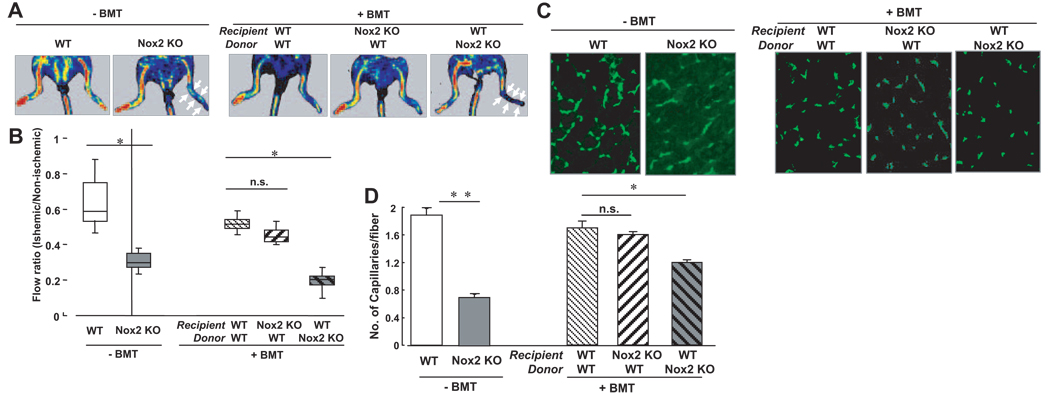Figure 4.
Transplantation of BM from wild-type mice rescues the impaired neovascularization after hindlimb ischemia in Nox2−/− mice. The lethally irradiated recipient WT or Nox2−/− mice were transplanted with BMCs from WT or Nox2−/− mice and subjected to hindlimb ischemia at 6 to 8 weeks after BM transplantation. A, Representative picture of laser Doppler blood flow (LDBF) imaging at day 14 of ischemic (right) and nonischemic (left) limbs after ligation of femoral artery in WT and Nox2−/− mice without (−) or with (+) BM transplantation (BMT). Arrow indicates delayed blood flow recovery. B, Quantification of blood flow recovery, as determined by the ischemic/nonischemic LDBF ratio in each group (n=4 to 10, *P<0.05). C, Representative pictures of immunostaining of isolectin B4 positive cells which represent capillaries in ischemic tissues obtained from WT and Nox2−/− mice without or with BMT, as described above. D, Quantitative analysis of capillary density, expressed as the number of capillaries per fiber in each group (n=4, *P<0.05, **P<0.01).

